12 Neoliberal Globalization
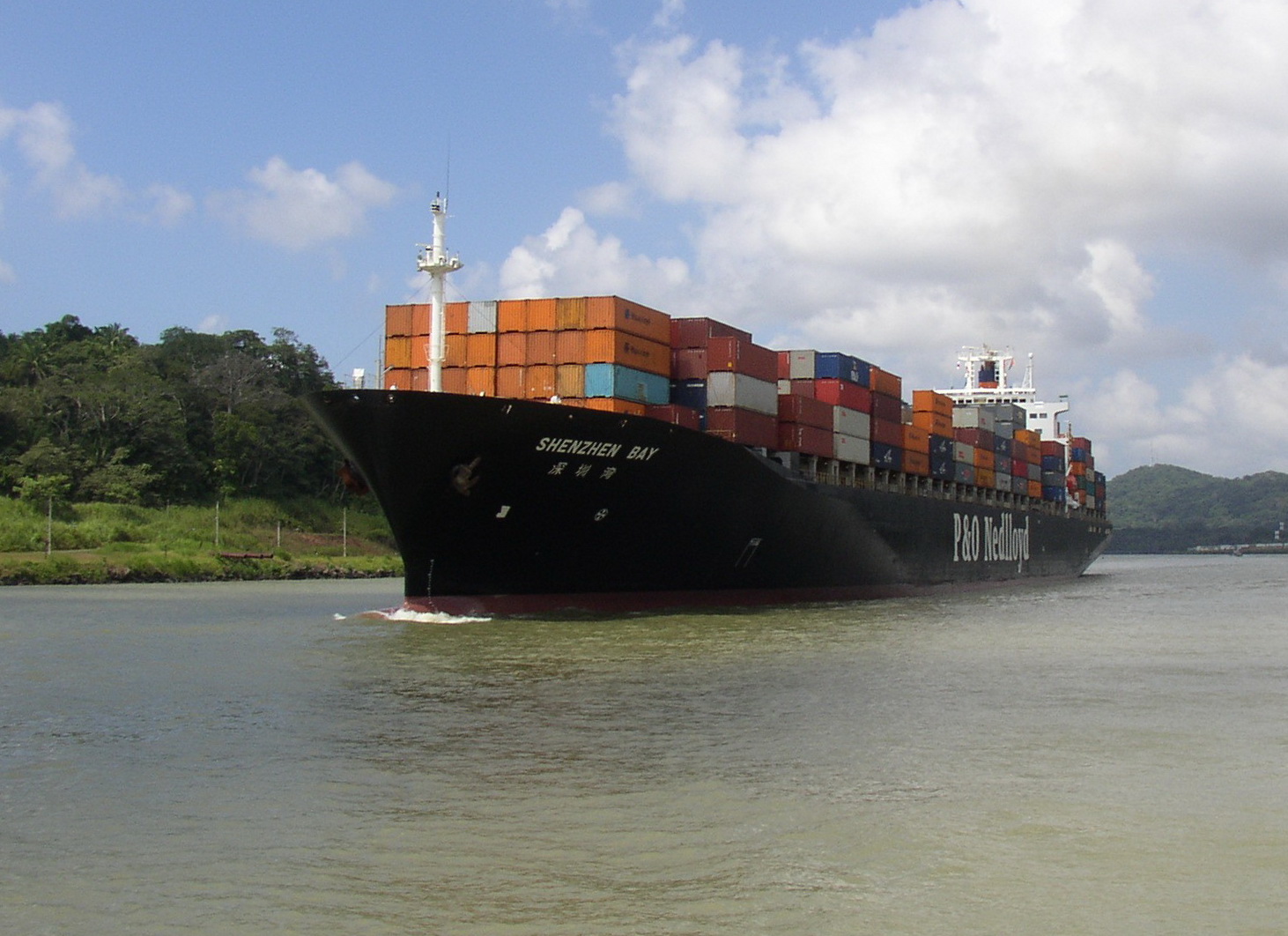
Chapter Outline:
The term Globalization has a modern sound to it, and an air of inevitability. Yet, what does it really mean? What are the consequences of political and economic decisions made by governments and transnational business corporations? And what does Neoliberal refer to? What’s new about the agenda described by this adjective, and what’s liberal?
- The Basics of Globalization
- Hidden Wealth
- Trading Policies
- Non US-Centered Globalization & The EU
- Revolutionary Technologies
- Social Media
At its most basic, globalization refers to business activities and the actions of governments beginning to be conducted on a worldwide scale. As we’ve seen, this has been happening throughout the modern period we’ve been covering, if not before. The voyages of Zheng He, the European colonial project in the Americas, the Atlantic Slave Trade, and the activities of the British East India Company in India and China were all conducted at a worldwide scale, and all had commercial elements. Conflicts such as the Seven Years War, the War of 1812, and World Wars I and II have also involved multiple continents. And events like the Columbian Exchange, which made American staple crops available to feed growing world populations, and the “Spanish Flu” pandemic which killed up to 500 million people throughout the world, also had global consequences. As we begin to look at the most recent wave of economic and political globalization, big commodities like petroleum become prominent again.

Twentieth-century economic colonialism involving oil was not limited to the Persian Gulf. As we have seen, before Iran, Iraq, and Saudi Arabia became leading producers, Mexico was a heavy supplier of oil to the US in the 1920s. In 1938, Mexican President Lázaro Cárdenas invoked the new, 1917 Mexican Constitution to nationalize all oil production in Mexico.
The constitution, which had been written during the Mexican Revolution, stated that the nation owned all the subsoil assets of Mexico, and Cárdenas formed the government-owned oil company PEMEX to extract and refine Mexican petroleum resources. Although the corporations (particularly Royal Dutch Shell and Standard Oil) objected loudly, Franklin Roosevelt’s administration, which was busy implementing the New Deal at home to ease the impact of the Great Depression on the American people, acknowledged the right of the Mexican people to control their own resources. Soon, the advent of World War II encouraged the Allied nations to put anti-fascist solidarity before the losses of a couple of U.S. corporations. PEMEX prospered and became Latin America’s second largest corporation in 2009 (after Petrobras, the Brazilian national oil company).
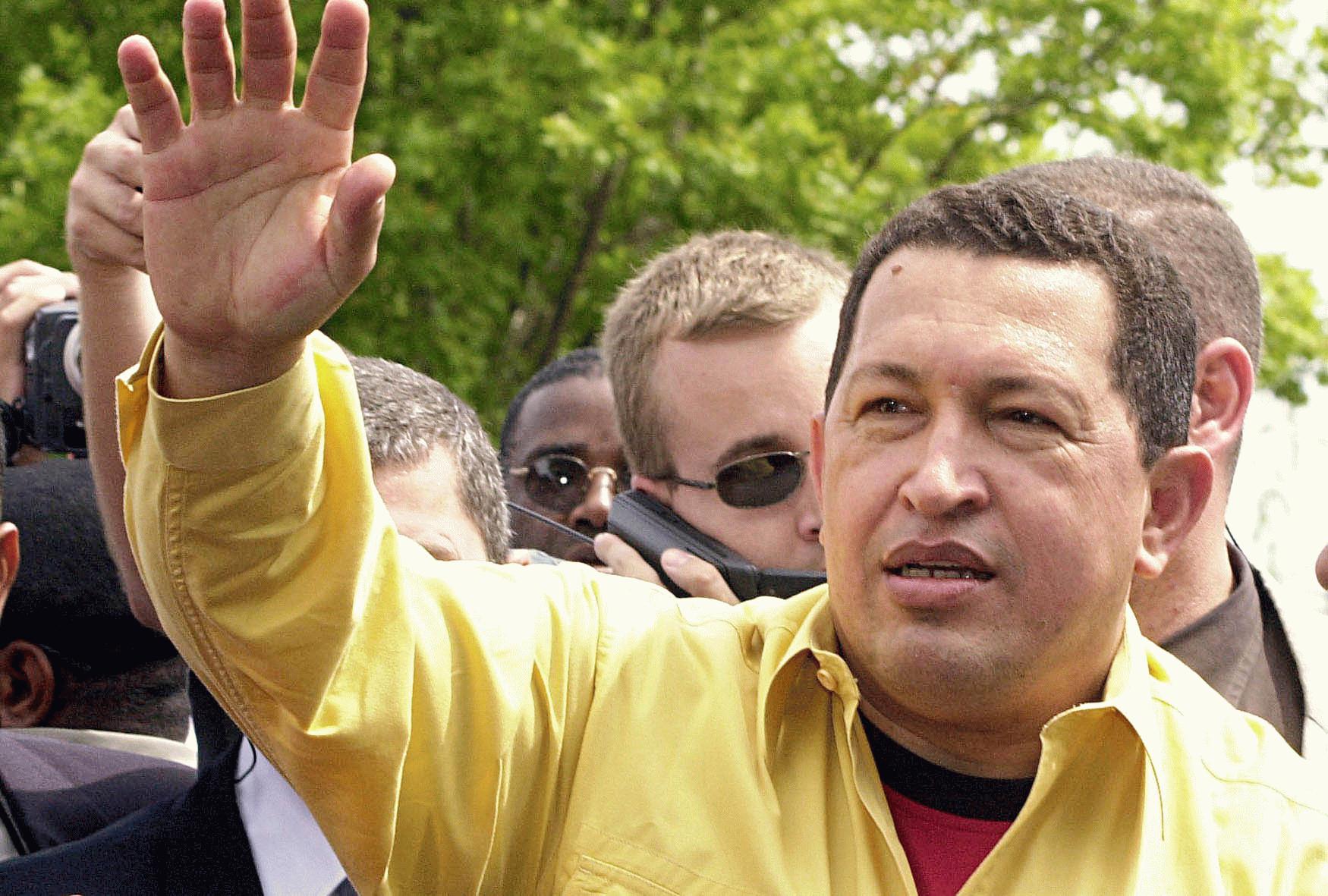
As I’ve mentioned earlier, development of Venezuela’s oil resources (thought to be at least 1/5th of known global reserves) began in the 1910s, when the country’s president granted concessions to his friends to explore, drill, and refine oil – and these concessions were quickly sold to foreign oil companies. In 1941 a reform government gained power which quickly passed the Hydrocarbons Law of 1943 which allowed the government to claim 50% of the profits of the oil industry. The outbreak of World War II increased demand for oil to such an extent that the government was able to grant several new concessions in spite of the 50% tax. The postwar explosion of automobile ownership in the U.S. continued to drive demand and push oil prices higher, and Venezuelan production increased. Venezuela bought the Cities Service company and CITGO gas became a key export of Venezuela. In 1976, the government nationalized the oil industry. Oil was a mixed blessing for Venezuela, providing high levels of revenue for the government but also preventing Venezuelan industry from diversifying. In recent decades, Venezuela used its oil revenue to pay for a wide range of social welfare programs for its people. The U.S. criticized these policies as socialist, but they were rarely done without widespread popular support in Venezuela. Hugo Chávez, who was president from 1998 to his death in 2013, criticized the U.S. government vehemently but also continued the Venezuelan policy of giving free heating oil to hundreds of thousands of poor people in the US and Europe.
Hidden Wealth
After increasing during the Arab oil embargo of the 1970s and then peaking during Russia’s invasion of Afghanistan in the early 1980s, oil prices languished in the late 80s, exacerbating the Soviet Union’s economic problems. In the early 1990s after the Soviet breakup, Russia began exporting millions of barrels daily into the world market. The dissolution of the U.S.S.R. and the Warsaw Pact accelerated the globalization of commerce. Globalization in this new phase is characterized by increased foreign investment by transnational corporations, privatization of state enterprises, free movement of capital across national borders, and a reduction of tariffs that impede the movement of products. A wave of deregulation accompanied these changes, as nations competed to attract businesses that were suddenly free to locate themselves anywhere resources, labor, and environmental costs were lowest.
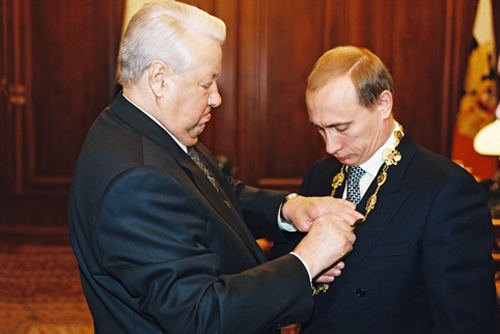
This free movement of capital across national borders was heralded by western pundits as the final, decisive victory of the free market over socialism and communist totalitarianism. The change to capitalism in Russia did much less than it might have to benefit the general population because the oligarchs captured so much of the profit. The man who captured the most profit seems to have been Vladimir Putin himself. Putin’s net worth in 2018 was estimated around $200 billion, or about twice the wealth of Jeff Bezos and four times that of Bill Gates, the two men who then topped the Forbes list of the world’s richest people.
Trading Policies
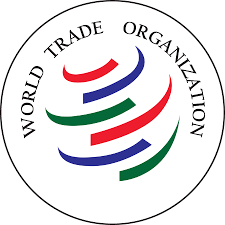
One of the important forces driving globalization has been the removal of protectionist trade policies around the world. This trend began in 1947 with the General Agreement on Tariffs and Trade (GATT), a free-trade agreement of 23 noncommunist nations. Over time, GATT reduced average tariff levels between member nations from 22% in 1947 to just 5% in 1999. The World Trade Organization (WTO) that followed GATT is a more permanent agreement that covers trade in services and intellectual property as well as physical products. The WTO, headquartered in Geneva, has 164 member states including, recently, China. Although the WTO’s charter calls on it to “ensure that trade flows as smoothly, predictably, and freely as possible” throughout the world, critics argue it favors rich nations over poor nations. Especially in its binding arbitration processes that function like an international trade court, whose decisions take precedence over local or even national court judgments. Global corporations that can deploy teams of lawyers (or even station them permanently in Geneva) to argue in their interest seem to have a disproportionate influence on WTO decisions. The process is designed to take a year (or 15 months with appeals) and the WTO says that since 1995, over 500 disputes have been brought and 350 rulings have been issued. Most of these rulings have benefitted the transnational corporations, often at the expense of workers, consumers, and the environment.
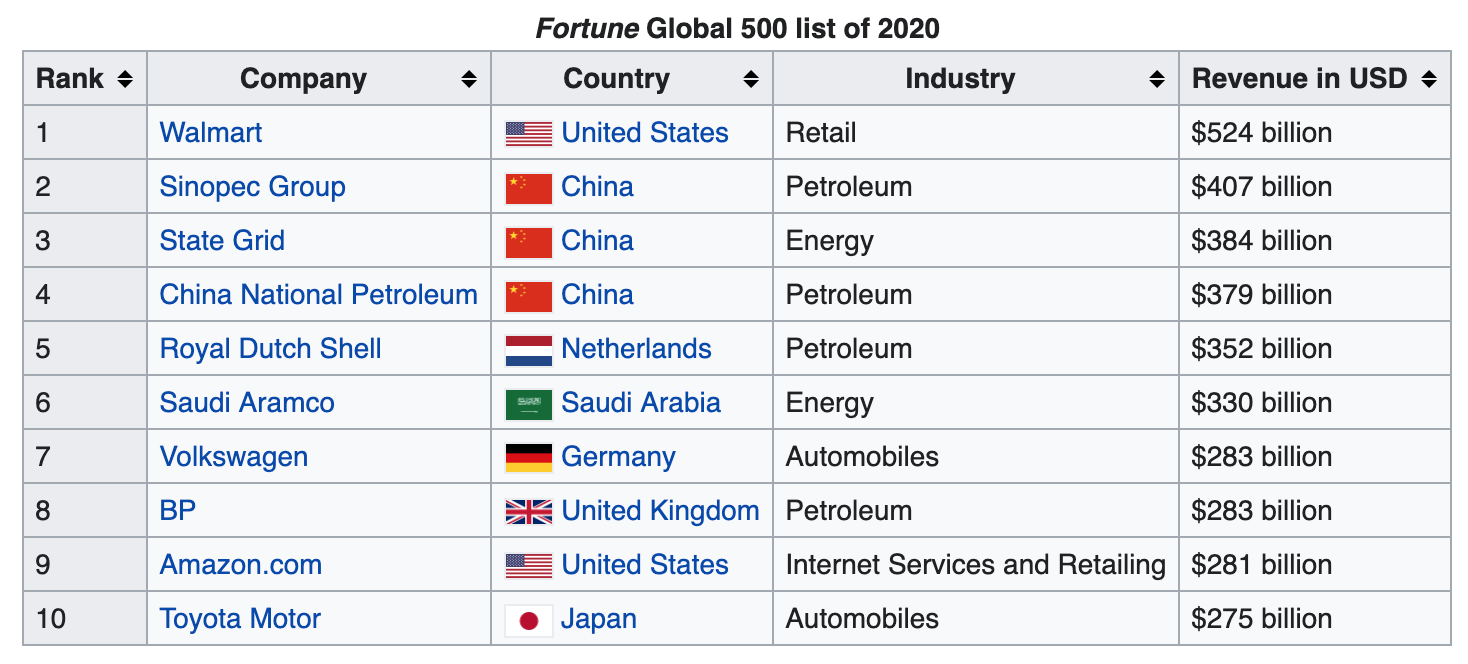
Transnational corporations are uniquely suited to take advantage of this new world economy. Technically there are about 50,000 global corporations, but the number of corporations that are as important as states in the world economy is a bit smaller.
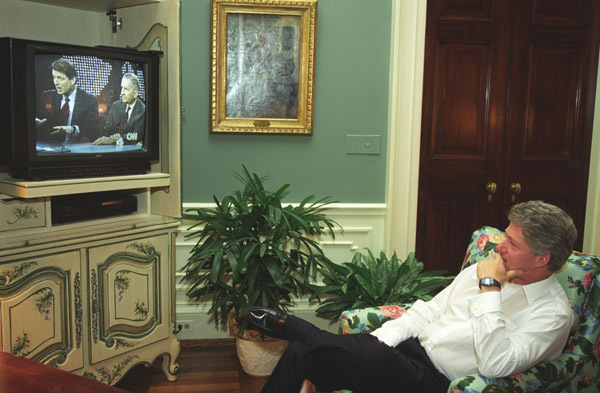
Free trade and “laissez faire” capitalism are typically believed to be a “conservative” value, so some people have been surprised to see the recent Republican (Trump) administration opposing agreements like NAFTA and TPP and the Democrats (Clinton, Obama, Biden) supporting them. Globalist trade policies have often been called “neoliberal,” but this is another confusing term. The elements that make this ideology “Neo” are in many ways the opposite of liberalism. Since the Enlightenment in social and political thinking that preceded the American Revolution, “liberal” has referred to a focus on expanding the rights and liberties of regular people, often against the power of governments. Today the liberties being protected by neoliberalism are often those of corporations, which in many cases have gained so much power over the lives of regular people that they are a more immediate threat than governments.
NAFTA was an example of neoliberal policy that increased the liberty of corporations at the expense of people. In a 1992 presidential debate, billionaire Reform Party candidate Ross Perot argued:
Perot went on to explain that although in the long run and from a global perspective, globalization makes economic sense, it was not necessarily good for America. Perot ultimately lost the election, and the winner, Bill Clinton, supported the North American Free Trade Agreement, which went into effect on January 1, 1994.
 The aim of NAFTA was to create a free-trade zone in North America and eliminate tariff barriers that made American exports more expensive in Mexico and Mexican exports more expensive in the U.S. Among the results, Mexico has risen to the second largest market for U.S. agricultural products, especially meat. Mexico has also become a large consumer of U.S. corn which receives extensive subsidies from the U.S. government. Cheap American corn has impacted the ability of Mexican farmers to compete and has also impacted the biodiversity of maize, which you’ll remember was originally developed in Mexico. Indigenous varieties are threatened by the monoculture of U.S.-developed hybrids – and since corn is wind-pollenated, the indigenous varieties are in actual danger of being lost. The danger of losing the genetic diversity of Mexican maize is that monocultures are vulnerable – remember the Irish potato famine? A pest or disease that wiped out Monsanto’s GMO corn would be bad for the company, but it would become a global disaster if scientists had no other varieties they could use to produce a new, resistant hybrid. Corn is the leading staple crop in the world. Do we really want to put all our eggs in one basket?
The aim of NAFTA was to create a free-trade zone in North America and eliminate tariff barriers that made American exports more expensive in Mexico and Mexican exports more expensive in the U.S. Among the results, Mexico has risen to the second largest market for U.S. agricultural products, especially meat. Mexico has also become a large consumer of U.S. corn which receives extensive subsidies from the U.S. government. Cheap American corn has impacted the ability of Mexican farmers to compete and has also impacted the biodiversity of maize, which you’ll remember was originally developed in Mexico. Indigenous varieties are threatened by the monoculture of U.S.-developed hybrids – and since corn is wind-pollenated, the indigenous varieties are in actual danger of being lost. The danger of losing the genetic diversity of Mexican maize is that monocultures are vulnerable – remember the Irish potato famine? A pest or disease that wiped out Monsanto’s GMO corn would be bad for the company, but it would become a global disaster if scientists had no other varieties they could use to produce a new, resistant hybrid. Corn is the leading staple crop in the world. Do we really want to put all our eggs in one basket?
Although the proponents of NAFTA claimed and predicted that the trade agreement would benefit all three nations, about eleven months after the agreement went into effect, the Mexican economy melted down. In late 1994, after Mexican investors decided to put their now-mobile capital in more stable investments abroad, the Mexican government was forced to devalue its currency and implement painful deflationary and austerity programs in order to get a bailout from the IMF. The experts and pundits all agreed that NAFTA was not to blame, and for the most part, the press either ignored or misrepresented the Mexican financial crisis, which it nicknamed the Tequila Crisis. Yet, the greatest effect, perhaps, of NAFTA on Mexico has been the rise of Mexican factories called maquialadoras; located just south of the border and makes products for the US market.
The Trans-Pacific Partnership (TPP), was designed to be NAFTA on steroids. TPP was established in 2016 to create a common market for countries bordering the Pacific. It sought to eliminate tariff and regulatory barriers to trade between most of the nations on the Pacific rim, to create a common market between Asia and the west coasts of North and South America. TPP would also establish an Investor-state dispute system that would allow global corporations to sue countries for practices they deem to be discriminatory. This means that if a national government tries to set a national minimum wage, mandate worker rights or safety regulations, or protect the environment, corporations can sue to have the laws changed or can demand compensation for their “losses”.
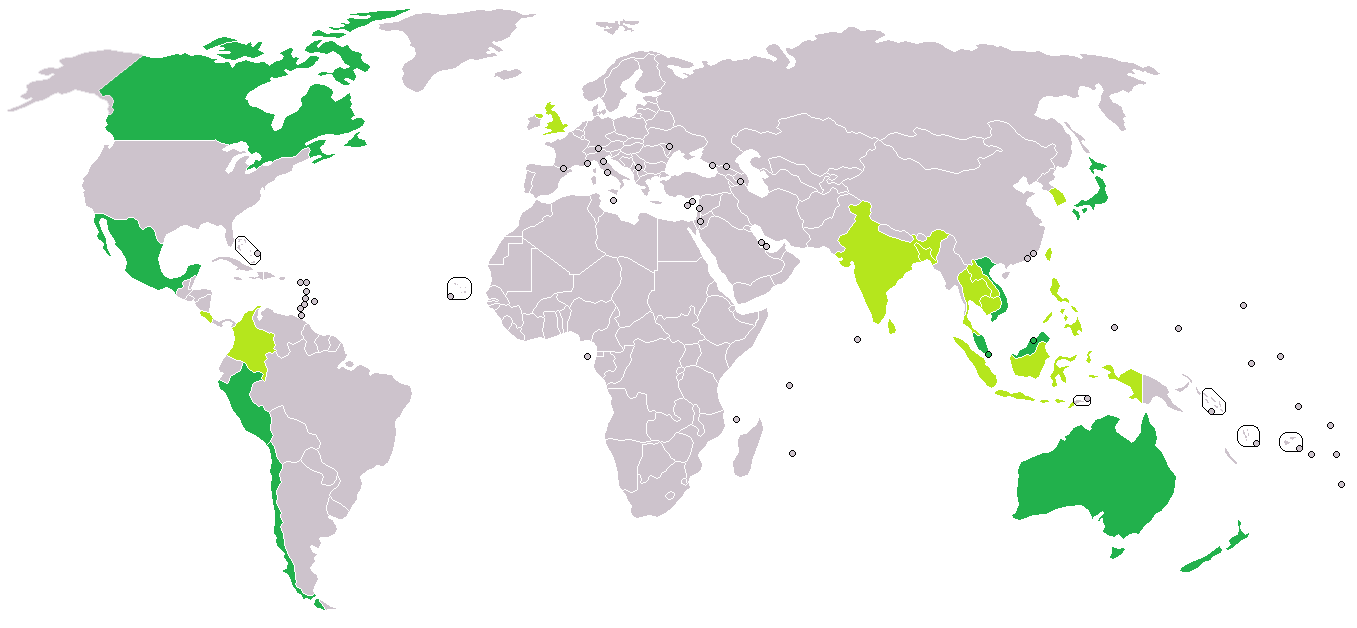
Critics argue this raises the status of corporations to make them equal or even superior to sovereign nations, allowing them to sue in an “Investor Court” that would favor their interests over the rights of citizens passing laws to safeguard workers’ rights, the environment, or other local concerns that impact the global corporation’s profits. This is another way neoliberal policies subvert the democratic institutions created by the original liberalism of the eighteenth and nineteenth centuries. Ironically, NAFTA already includes an investor-state court system for the U.S., Canada, and Mexico, but since most of the companies that would use this system are U.S.-based, it is not seen as being an issue for Americans. TPP would be a much bigger source of lawsuits from transnational corporations not originally based in America and the U.S., which has higher minimum wages, worker safety standards, and environmental regulations, would probably be a target of many.
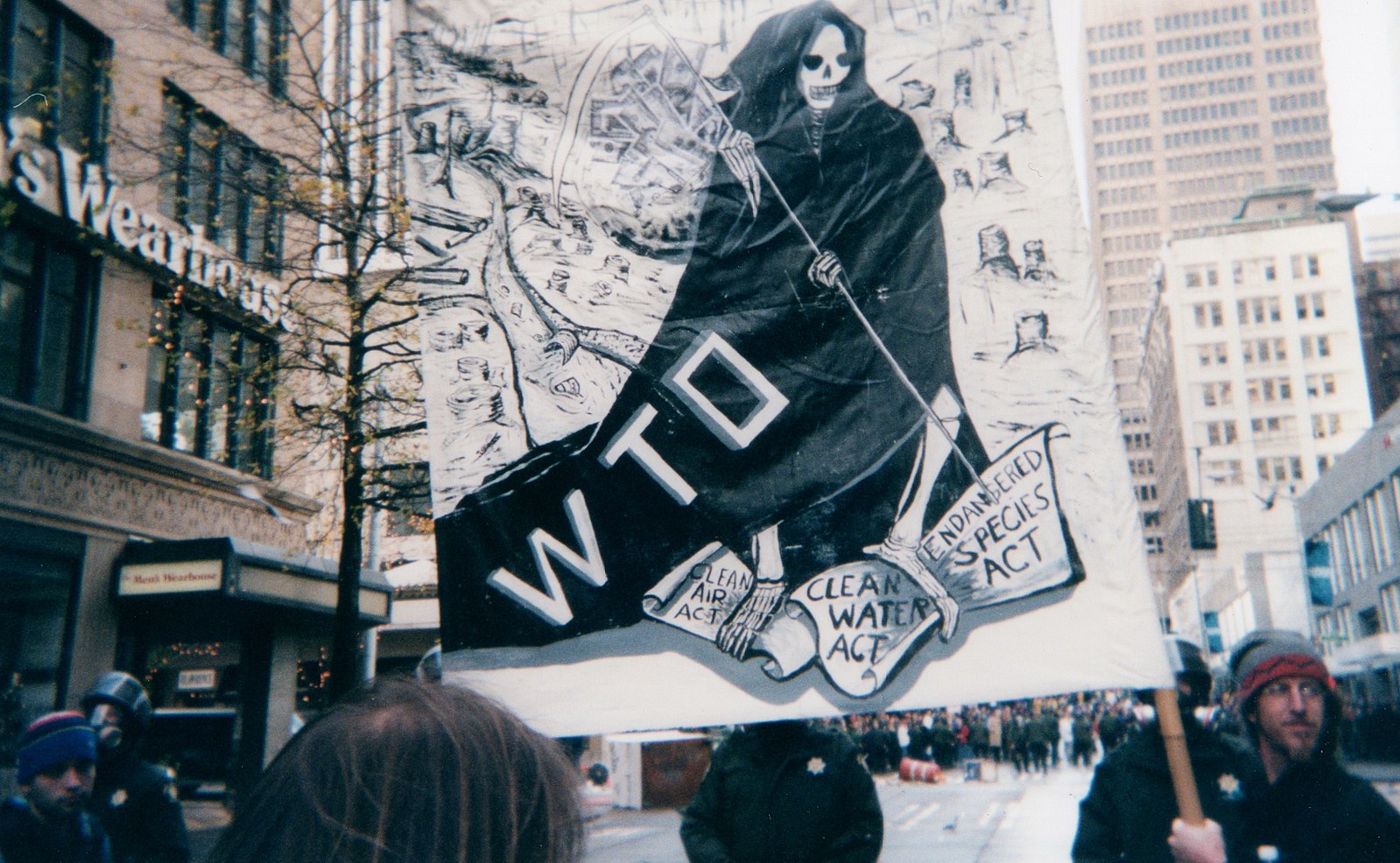
In 1999, protestors picketed meetings of the WTO in Seattle and in 2011 Occupy Wall Street protested wealth inequality in New York. President Trump’s move in January 2017 to withdraw the U.S. from TPP was applauded by Progressives like Bernie Sanders and Elizabeth Warren. In rare agreement with Trump! On the other hand, mainstream Republicans like the late Senator John McCain criticized what he called “a troubling signal of American disengagement in the Asia-Pacific region at a time when we can least afford it.” McCain’s concerns may have been genuine, but in the last five years of his life, McCain’s campaign committee and PAC raised and spent about $17 million dollars, mainly from corporations that had an interest in the success of TPP. Creating a growing sense, among regular people, that both parties are under the control of their political donors, and no longer governing for the people.
Non US-Centered Globalization & The EU
An important element of the shift away from a U.S.-centered globalization is the growing economic power of Asia. Japan’s economy was jump-started after WWII by U.S. aid including a $2 billion direct investment and letting Japan off the hook for war reparations. Japanese goods were also given preferential access to U.S. consumer markets, so the Japanese economy focused on low-wage industries producing products for export to America. The United States no longer considered Japan a threat, but rather as a potential ally against communist China. The Japanese people, already quite accustomed to austerity, complied with their government’s new industrial policy and Japan reinvested its earnings and rapidly grew from a producer of cheap knock-off copies of American products to an innovator in high technology.

Other Asian nations like Singapore, South Korea, and Taiwan followed in Japan’s footsteps in the 1960s and 70s, often also with aid from the U.S. designed to slow the spread of communism during the Cold War.
As Chinese purchasing power increases, world industry is challenged with producing consumer goods without exhausting finite resources or destroying the environment. Chinese cities have been known for their pollution; especially for their poor air quality. An increasingly affluent population may become less willing to tolerate environmental destruction, which might be a positive change. Hopefully, Chinese interest in projects such as the Belt and Road Initiative, which seeks to connect China with the rest of Asia, Europe, and Africa in a “New Silk Road”, will include a commitment to the environments of the places China finds its natural resources and markets for consumer goods, rather than the approach to hinterlands taken by earlier world economic powers, in which out of sight often meant out of mind.
Revolutionary Technologies
In addition to the increase in international trade, global culture has been permanently changed by communications technology. Computer networks and cell phones continued a process begun with the printing press, the telegraph, radio, and television. Each of these technologies has been used to spread ideas to wider audiences, often against the wishes of those in power. More recent inventions like fax machines, data communication via modems, the internet, and most recently smart phones and social networks have been used to spread news of events like the Tiananmen Square protests, the Arab Spring, the Egyptian Revolution of 2011, and the Cuban protests of July 2021. In spite of the efforts of some nations like China and Saudi Arabia to censor media and limit internet access, it is increasingly difficult to firewall societies from the global media culture. As the virtual world is becoming as important to the global economy as the physical world of “bricks and mortar” commerce and communication, let’s take a moment to review the technological, government, and business changes that enabled it.
Recommended Start Time: 17:12
https://www.youtube.com/watch?v=OSQld7xVMn0
The final element in the story of computing and networks involves the battle between free, open resources and commerce, which we’ve already seen in the growth of the web. Operating systems in early mainframes and personal computers were tightly controlled by manufacturers like IBM, Digital Equipment Company, or Hewlett Packard, software businesses like Microsoft (DOS and Windows), and a number of workstation companies like Sun Microsystems and Silicon Graphics, which each owned a proprietary version of an operating system that had originally been developed by researchers at AT&T Bell Labs (which was prevented by an anti-trust ruling to get into computers) and the University of California, Berkeley. The Uniplexed Information and Computing Service, called UNIX, had originally been more or less open, but had become commercialized when AT&T sold its rights to a network software company, Novell, which later sold those rights to Santa Cruz Operation (SCO). In time, other organizations released versions which only ran on their hardware (and often cost thousands of dollars), including IBM (AIX), Microsoft (Xenix), Sun Microsystems (Solaris), SGI (IRIX) – all proprietary distributions with similar functionality.

In 1991, Finnish graduate student Linus Torvalds became frustrated with the high cost of UNIX. He wrote an operating system kernel in C, which he planned on calling Freax. Instead, early users called it Linux. The open-source operating system rapidly gained popularity among hackers due to its free distribution and its easy configurability. A programmer could configure the Linux kernel with just the features desired, which led to an explosion of both OS distributions (Red Hat, Debian, Ubuntu, Darwin, Android) as well as uses in embedded systems which were becoming popular. PC manufacturers like IBM and Dell adopted Linux as an option to reduce the cost of their systems and break Microsoft’s monopoly on the OS. Linux became especially popular for running file servers and internet routers, replacing expensive proprietary systems like IRIX, Microsoft NT, and Cisco. And organizations like NASA discovered that clusters of networked off-the-shelf PCs running Linux could rival the computing power of proprietary supercomputers. Companies like Sun and SGI found the markets for their workstations and servers disappearing overnight. Currently all the systems on the Top-500 supercomputer list run Linux.
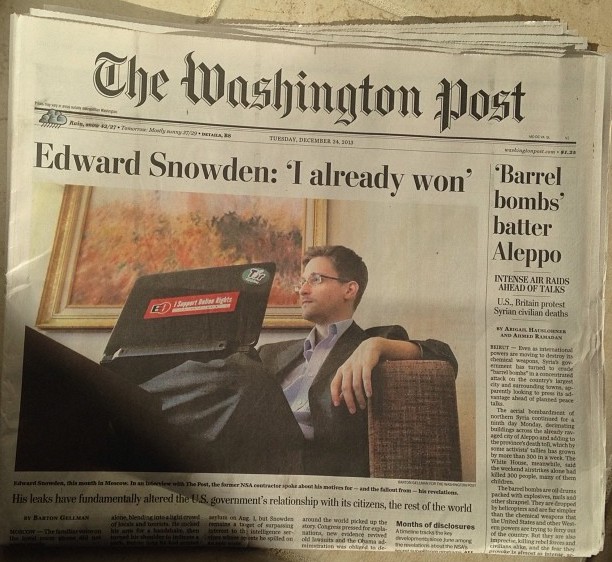
As computing power enables increasingly complex artificial intelligence (AI) systems that can control financial trading systems, power grids, and scientific research, the challenges of national technology competitions become apparent. Yet, even the new web technology has its dark side. Social media has been implicated in helping cause the genocide in Myanmar against the minority Rohinga population. Russian me
ddling and manipulation of Facebook data by a company called Cambridge Analytica may have influenced the 2016 Brexit vote. Foreign hacking and social media manipulation were both alleged during the 2016 and 2020 US presidential election, although it’s unclear whether the intervention changed the outcome. In the course of investigating charges of Russian interference, details have come to light of just how compromised social media sites like Facebook have become and how much of their users’ data they hold. And in 2013 American whistleblower Edward Snowden released information to journalists showing that intelligence agencies such as the NSA and British GCHQ are systematically invading the privacy of citizens in a number of illegal ways. As a result of these disclosures, Snowden has been forced to live in exile in Russia. It is not clear, however, whether the practices have been discontinued.
Social Media
Finally, even when there’s not an adversary regime like Russia spreading disinformation, Social Media algorithms create “filter bubbles” in which people only see information that doesn’t threaten their world-views. As time goes on, people on different sides of issues can literally find themselves living in different worlds, basing their beliefs on different data, and believing the other side is irrational and evil.
As technology exploded, many people expected a renaissance of DIY content-creation, and the explosion of websites, blogs, vlogs, podcasts, Instas, snapchats and YouTube channels has definitely expanded the ability of regular people to be heard. Five billion YouTube videos are watched daily and 300 hours of video are uploaded every minute. On the other hand, more content is produced for the web by global corporations daily, and the Federal Communications Commission (FCC) has begun to eliminate net neutrality so corporations can buy “fast-lane” access that will turn the web into just another platform for corporate media. The promise of the early internet was that even though corporations participated, it was basically a peer-to-peer platform. Eliminating net neutrality could potentially kill that, unless hackers can come up with a new disruptive technology that allows the people to stay ahead of the corporations. If corporations can pay to have certain types of data or media fast-tracked, they can also pay to have other types of information slow-tracked or even suppressed. Imagine if a group with deep pockets and a political agenda could start editing what you can see on the internet. Oh wait. Don’t imagine it. It’s already happening.
Knowledge Check:
The term Globalization has a modern sound to it, and an air of inevitability. Yet, what does it really mean? What are the consequences of political and economic decisions made by governments and transnational business corporations? And what does Neoliberal refer to? What’s new about the agenda described by this adjective, and what’s liberal?
- The Basics of Globalization
- Why did President Franklin Roosevelt decide not to intervene on behalf of foreign oil companies in Mexico?
- What was Venezuela’s motivation for nationalizing its oil and then giving some away to poor people in the U.S.?
- Hidden Wealth
- Why might a leader such as Alexander Putin wish to hide his wealth?
- Trading Policies
- What are the implications of the top global corporations being larger than all but the largest nations?
- How might a greater shift toward China in the “Top 500” list affect the world balance of political power?
- Why did NAFTA receive so much bipartisan support in the U.S. before its passage?
- Were the overall effects of NAFTA positive or negative for the U.S.?
- Who benefitted the most? Who suffered most?
- In what ways might TPP be more challenging for the U.S. than NAFTA?
- What do you make of the agreement of “Populists” on the left and the right over U.S. trade policy?
- Non US-Centered Globalization & The EU
- In what ways was the U.S. instrumental in creating the “Asian Tiger” economies?
- How did Mao Zedung’s death change Chinese economic and trade policy?
- What were the arguments for and against “Brexit”? Which do you find more compelling?
- Revolutionary Technologies
- How do computers and communication networks affect world culture and politics?
- What do you think the internet would be like now, if it had not originally been a scientific/government network?
- Most of the hardware and software you use was developed during your lifetime. Do you think this has implications for a “generation gap” between your generation and your parents’ generation?
- How did the development of open source operating systems like Linus change the economics of high tech?
- Which do you think is a greater threat to the future: foreign domination of high performance computing or the government’s invasion of citizen privacy? Why?
- Social Media
- Why are “filter bubbles” a problem?
- Do you think technology has led to cultural imperialism?
- What is the danger of a loss of network neutrality?
This is an adaptation from Modern World History (on Minnesota Libraries Publishing Project) by Dan Allosso and Tom Williford, and is used under a CC-BY-NC-SA 4.0 International license.
Media Attributions
- Panamax_container_ship © Williamborg is licensed under a CC BY-SA (Attribution ShareAlike) license
- 1599px-Pemex_gas_station © Magister Mathematicae is licensed under a CC BY-SA (Attribution ShareAlike) license
- Hugo_Chavez_in_Brazil-1861 © Carlosar is licensed under a CC BY (Attribution) license
- Vladimir_Putin_with_Boris_Yeltsin-3 © Kremlin.ru is licensed under a CC BY (Attribution) license
- WTO. © Samhitha Bhat is licensed under a CC BY-SA (Attribution ShareAlike) license
- Screen Shot 2020-12-28 at 9.29.56 AM © Wikipedia is licensed under a CC BY-SA (Attribution ShareAlike) license
- photograph-of-president-william-j-clinton-watching-vice-president-albert-gore-b3b7cc-small © National Archives is licensed under a Public Domain license
- TPP_enlargement © Hanzlan is licensed under a CC BY-SA (Attribution ShareAlike) license
- 1600px-WTO_protest_sign_(14988892087) © Kingofthedead is licensed under a CC BY-SA (Attribution ShareAlike) license
- Deng_Xiaoping_and_Jimmy_Carter_at_the_arrival_ceremony_for_the_Vice_Premier_of_China._-_NARA_-_183157-restored(cropped) © National Archives is licensed under a Public Domain license
- Linus_Torvalds © Unkonwn is licensed under a CC BY-SA (Attribution ShareAlike) license
- 11534873615_d9ca4e86e1_z © Eddie Codel is licensed under a CC BY-NC-SA (Attribution NonCommercial ShareAlike) license
